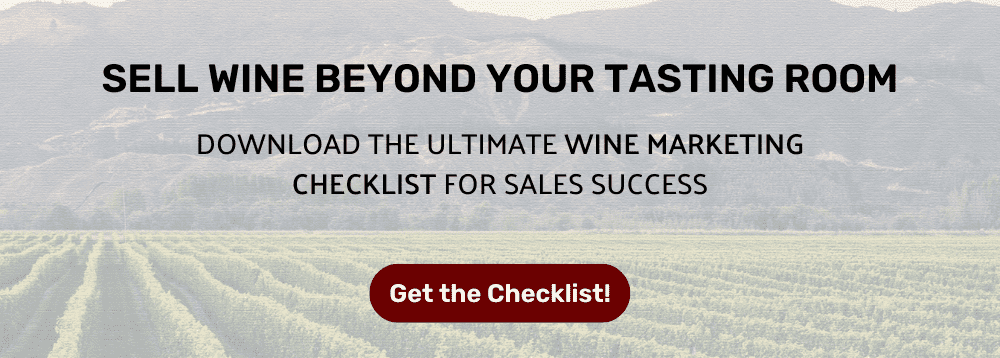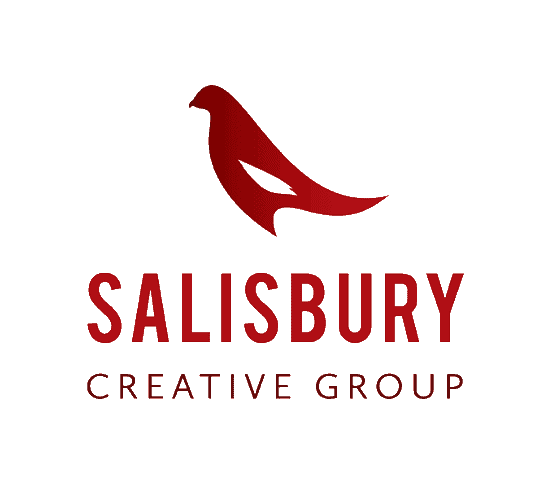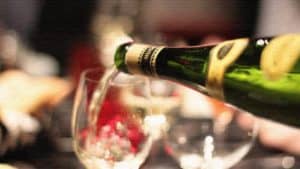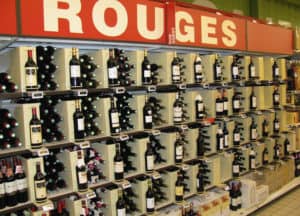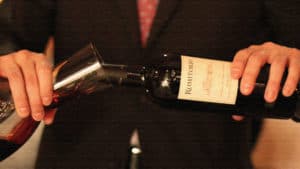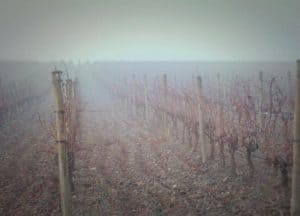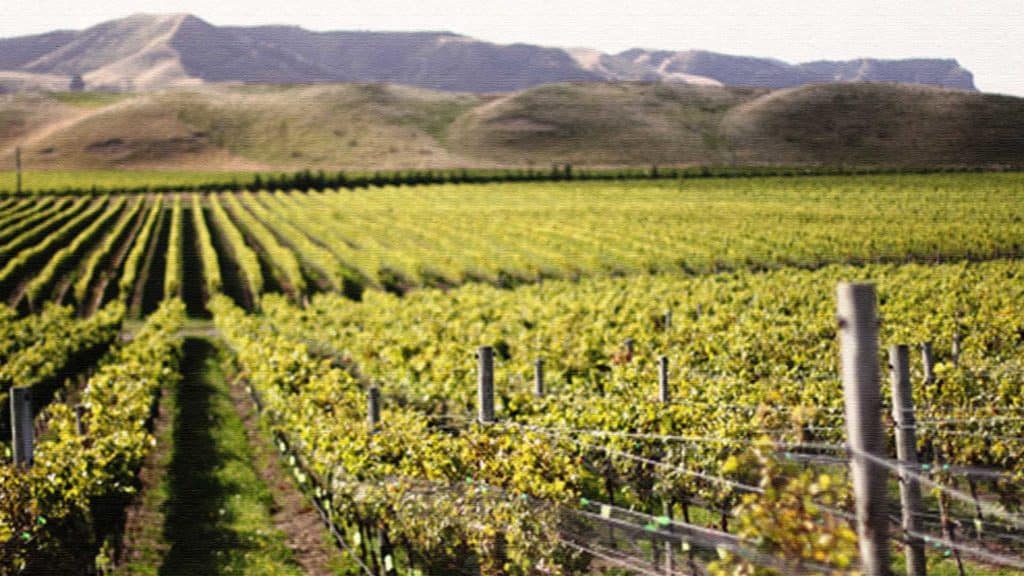
The budgeting process for 2022 is finished (or should be). Funds have been allocated to all the major spending categories. But what is not completely set in stone (and should not be) for most companies is the strategy itself for wine business and marketing.
In a hyper-competitive consumer product category such as wine (and spirits), it can be a great advantage to remain flexible both in terms of strategy and execution -especially in times of uncertainty such as the one we are in.
To survive and thrive, wine companies must be nimble and fleet of foot with a wet finger held continually in the wind. This is no time to be rigid. But neither is it wise to have your proverbial ladder up against the wrong wall.
Summer’s end is a great time to take a hard, objective look at key aspects of your business and marketing strategies that could make or break your 2022 plans.
With that in mind, here are five key things worthy of war-room discussion.
1. Get your story straight
There is no shortage of chatter around the industry regarding the importance of telling your brand story. But the WAY marketers deploy the use of storytelling could use a major tune-up in far too many instances.
Who is the hero of your story?
Is your brand the “hero” or the end-user of your products?
If the end consumer is not positioned as the true “hero,” your brand’s story is likely to get lost in the cacophony of 40,000+ others attempting to do the same thing.
How much do you truly know about your target customer? And, more importantly, do you know what they want? Learn how to tell your winery story in a way that generates sales and keeps your customer front and center.
According to Donald Miller, author of the must-read book, StoryBrand, the role of a brand is to act as a guide that comes alongside the “hero” to help them obtain their desires.
Who is your customer?
It is a simple question which, until recently, was difficult to answer. Thankfully, this knowledge is far more accessible than just a few years ago courtesy of industry oracles like Paul Mabray and Cathy Huyghe. Painting wine consumers with too broad a brush is a surefire road to ruin (paved with misappropriation of marketing funds due to ignorance).
“Social listening” strategies exist for even the tiniest garagiste thanks to social media. One merely needs to ask, listen and engage with their audience.
And therein lies the rub. Too many wineries are so busy yammering about how “special” their wines are, they have no time to engage in such pedestrian pursuits as replying to every comment on their social feeds or monitoring the conversations wine lovers are enjoying with their competitors.
Which is a good segue to the next point:
Is your brand TRULY unique?
If one looks closely enough, it is not difficult to find a thousand wineries with these exact same claims:
- Estate grown? Sorry, not nearly unique enough.
- Wines that express the terroir? Get in line.
- Multi-generational heritage? Join the club.
- A “visionary” winemaker? Yawn.
The cold hard truth is making great wine is simply not enough these days. Not by a longshot!
What truly differentiates wine brands today is how well they know their customers, how deeply they understand what they want, and how seamlessly and effortlessly they can provide it to them.
Like all human relationships, people do not want to be enrolled in your story, they want you invested in theirs.
Authenticity: honest or hoax?
This, in theory, should be the easiest part of wine marketing. Being yourself takes no effort whatsoever. To those who understand, no explanation is needed. To those who do not understand, no explanation will suffice.
If there is any part of your messaging that is cooked up to give the perception of authenticity, the game has already been lost.
Culture eats strategy for breakfast. You are what you are and today’s consumers expect authenticity as the default. Too many wine brands twist themselves into knots trying to prove their authenticity. Actions are the coin of the realm, not intentions.
2. Organic social media
Too many wine brands are attempting to fill one big bucket they call “social media” or “digital marketing.” It is a costly miscalculation and the reckoning goes way beyond money.
It is not about your wine
Wine brands who trod daily on the feeds of millions of hapless users would be wise to take a page out of Michael Pollan’s 7-word maxim: “Eat food. Not too much. Mostly plants.”
Here is the corollary of this witticism for wine on social media: “Create shareable content. Not too much about yourself. Show that you care by engaging.”
Just because one CAN post something on their social feeds, does not mean one should. The key to amassing a horde of raving fans is to create sharable content. That is the litmus test. If people are sharing it.
And the key to sharable content is providing that which your fans want to see; not what you want to show them.
Please do not blow past these remarks. This is 100% within brand owners control to adjust. The best part is it costs very little and our step-by-step guide will show you HOW you can promote your winery with organic social media.
The goose is laying golden eggs. Let her do it.
Organic success on social media is a bird’s nest on the ground for marketers. They need only bend over to pick it up. Executed correctly, it is like a goose laying golden eggs of brand awareness and consideration. Never confuse the free stuff with the paid stuff. Learn to separate ads from content.
The goodwill of your potential customers is dangling in the balance. Your grandmother was right: it costs nothing to make a new friend. A surefire way to lose a friend is to make the relationship all about you.
Give generously and authentically to your fans as you curate your social feeds. Keep your powder dry for the paid stuff.
One final word to the wise: stop boosting posts!
3. Paid social media
Self-promotion should have an extremely limited place on your social feeds unless it provides value to your fans in the form of education and entertainment. But, it may surprise most wine marketers to learn self-promotion has no place in your ads either.
Ads that look like ads (self-promoting, self-glorifying) only add to the cacophony already present. Ads that look like ads are generally a waste of time and money.
The BETTER way to leverage your brand in your wine marketing is to attract potential customers to you by offering something of value to enroll these fans onto your email list. What we are talking about here is lead generation.
When you leverage your ad spend to grow your email list you are building something that will endure. Your email list is “owned media.” It can never be taken away from you (unlike your social fan base).
Find & Attract with ads, sell with email
Use Facebook & Instagram ads to find and attract potential customers but use your email marketing to SELL to them.
For those used to sending email blasts (newsletters and marketing emails) to your entire email list, this is a foreign concept indeed.
Most wineries are utilizing email marketing tactics that are sorely outdated. It could be because these things used to work in the past. More likely, though, is they do not know what to do instead.
The game-changing magic of lead generation
The big shift here is to utilize a “pull” strategy rather than a “push” strategy when spending money on ads.
This is done by first creating a “lead magnet” which can be a checklist, a guide, a cheat sheet. Something of value that wine consumers want to get their hands on so much they are willing to surrender their email address to obtain it.
Lead magnets are widely used in other industries but not so much in wine which is a huge oversight.
Here are some examples of actual lead magnets that have been used to garner HUNDREDS of new email subscribers:
- A wine aging cheat sheet helping collectors understand how to properly age wines and how to tell when they are ready to drink.
- A list of the six most underrated wine regions in America highlighting the great bargains to be discovered.
- A one-page pdf sharing ten great bourbons NOT made in Kentucky
- A four-page guide sharing a history of distilling in the state as well as a list of ALL the small craft distilleries in New York state, where they are located, and their web address.
- A Sauvignon Blanc lovers guide that celebrates the joys of this crisp, clean, and refreshing wine and educates consumers about the various styles of this popular varietal.
- A twenty-two page e-book, “Your Guide South African Wines”
- A pdf called, “Wine Grape Family Tree” that shows the genetic lineage of both popular and lesser-known grape varieties.
The possibilities are endless. But do they WORK? Absolutely!
Converting Brand Awareness into Sales
Most wineries (and craft distilleries) that spend money on Facebook and Instagram ads are chasing brand awareness. While there is nothing inherently wrong with this approach, most wineries cannot afford to wait for that brand awareness to “ripen” into revenue. And, statistically, it may NEVER ripen – especially if all you are doing is tooting your own horn.
The best way to accelerate the customer journey is to build a relationship with them based on giving them what THEY want.
Wine lovers do not come to Facebook and Instagram to SHOP. They come to be entertained and engaged. By putting their needs ahead of your own, your chances of converting them into paying customers increases dramatically.
When you provide useful tips, instructions, and education, you are planting seeds that will eventually sprout. This is the “law of the harvest.”
Respect the “funnel!”
To achieve the best return on ad spend, you must respect the journey that all customers take. There are phases of this customer journey that cannot be short-circuited in wine business and marketing.
These stages are best expressed as a “funnel.” At the top of the funnel (the widest part), are people who do not yet know your brand. As they progress deeper into the funnel, they become interested. Next, they begin to evaluate your offerings. Eventually, they commit (make a purchase). From there it is all about retaining them in such a high-quality, value-based way they become advocates for your brand.
Ads with a call to action of “Buy Now” or “Shop Now” are ignoring the reality of the customer journey and will always have an extremely low conversion rate. Attempting to “sell” at the top of the funnel is a surefire recipe for failure.
But never fear. Email is here. It is through the expert use of email marketing that you guide prospects deeper into the funnel.
4. Email marketing
When it comes to the use of email in marketing, most wineries fall into one of three categories:
- Not using email at all
- Barely scratching the surface
- Using old, outdated tactics
By far, most wineries land in the third bucket.
Ninety-nine percent of people check their email every day
Email is NOT dead! For 2022, learning how to leverage email marketing effectively could go a long way towards selling every last bottle you have produced because email marketing (done correctly) is the lowest cost, highest return on investment of ALL wine selling strategies. Read our top email marketing strategies for wineries.
Antiquated, ineffective tactics include sending out long, self-indulgent newsletters that very few people read, blasting promotional emails to your entire list regardless of the interests of your subscribers, and sending wine pickup reminders to your club members.
The anti-newsletter strategy
Blasting out boring newsletters to your entire list is so yesterday’s news it hurts.
There is SO MUCH MORE to an effective email marketing strategy than newsletters!
The fulcrum on which a modern strategy turns is personalization (based on detailed segmentation) combined with automation.
Instead of using a more-is-more, spray-and-pray approach, savvy wine marketers should be using a less-is-more, highly personalized approach.
This is not hard to do, costs very little, and will make a HUGE difference in your revenue. Interested in more details? Watch this webinar recording.
Effective, modern tactics include all of the following:
- Utilize custom email sign-up “forms” that can be embedded anywhere on your website (ideally in multiple places)
- Build automations (pre-defined rules to trigger personalized email messages based on specific actions customers take) such as an automated “welcome email” when they first join your list.
- Create custom landing pages to serve up your lead magnets
- Integrations with your Facebook Ads – especially your Facebook Lead Ads (you may need a tool like Zapier to help)
- Leveraging click segmentation to automatically add “tags” each time a user takes an action.
- Leveraging thorough and detailed user engagement reports
Given the intense competition for wine-buying consumers, wineries can ill afford to stick with an outdated, antiquated email marketing strategy. The new year is rapidly approaching. What a great time to re-calibrate and commit to improving YOUR approach!
5. Channel strategy
Relying on tasting room traffic and wine clubs for the majority of your sales has already proven to be a precarious strategy.
When it comes to venturing into the world of three-tier distribution, wineries must forget everything they ever know about this channel of trade.
There was indeed a time when wineries could strike up a relationship with a small, boutique distributor in a couple of states and enjoy shipping a pallet here and a pallet there. But those days are LONG GONE.
Even if you could convince a distributor to start carrying your wares (an increasingly unlikely scenario), it is a cold hard fact that the burden of building distribution would still fall to YOU. The reason is simple. WAY too many wine brands and WAY too few distributors.
Distributors of today (large, medium, and small) simply are overwhelmed. Wineries foreign and domestic would be wise to think of distributors as nothing more than logistics companies providing warehouse and delivery services to the accounts YOU sell.
Digital selling in the three-tier world
But, here is the good news. Thanks to modern technology, wineries everywhere can open up new channels of distribution digitally.
There are FOUR additional channels of trade available today to wineries (and craft distilleries) of all sizes:
- E-commerce
- E Premise (LibDib) (digital selling to on and off-premise)
- Winery direct
- Wine clubs & marketplaces
E-commerce
There is no shortage of training, education, and support for the modern seller of wine online. But not everyone is good at it. This article can help you evaluate YOUR state of readiness to fully capitalize on this channel: How to Sell Wine Online Like a Pro.
E premise (digital selling to on and off-premise)
Thanks to the three-tier compliant platform called LibDib, wineries all over the world can legally sell wine to restaurants, bars, and package stores in six states (CA, CO, FL, NY, WI, IL) without ever getting up from their desk. Joining this platform is FREE.
The catch is you still have to generate demand among restaurants, bars, and package stores yourself and drive your own traffic to your product page(s). but, with the powerful combination of Lead Generation and Email Marketing (see points 3 and 4 above), this is totally doable.
Start with one state. Build some traction. Then expand. In fact, LibDib will be continually adding more states so you had best get started as soon as possible.
Winery Direct
The success of Total Wine & More’s “winery direct” and “spirits direct” model, has been imitated by all of Total Wine & More’s major competitors. This means Total Wine & More is not the only player in this very modern game.
But, the most exciting thing is even mom & pop package stores and wine shops can get in on this action if they desire. The field is still very open for the savvy wineries paying attention.
How the winery direct game works
This is pure genius once someone explains it. If a retailer can get their hands on a wine brand that has very little brand recognition and very little broad-market distribution, they can pretty much charge whatever they want for it because the consumer has no basis of comparison.
Consumers are not stupid. They know how much a bottle of Kendall Jackson Chardonnay or Jack Daniels’ should cost at retail. But when they walk into a store and trip over a stack of Ballyhoo Brothers Estate Chardonnay priced at $19.99 per bottle, they can Google to their heart’s content and no price comparison will be found.
The winery direct model depends on obscurity; on an absence of brand recognition. If the consumer cannot tell if the price is a good price or not, the retailer is free to charge as much as they want.
This model is so effective that new, private label brands have been created for the sole purpose of offering them as “winery direct” offerings.
But wait, there is more…most major retailers participating in the winery direct game utilize “clearing distributors” rather than traditional three-tier distributors that charge a small handling fee per case instead of a whopping 25-35% distributor markup. It is all one hundred percent legal. And VERY smart.
That $19.99 bottle of Ballyhoo Brothers Chardonnay probably cost the retailer less than $9.00 to bring it into the store. A profit margin of forty, fifty, and even sixty percent is not unusual. It is pure genius.
How to participate in the winery direct game
Let us say you own a small winery in Sonoma. Up until now, you have only ever sold wine via your tasting room, via your wine club(s), and from your website. You have zero “distribution” in states outside of your home state.
You then approach one of these retailers (in a state where you have no current distribution) that utilizes the winery direct model and offer to sell them your wines “directly.” Chances are good that the retailer is already utilizing the services of a “clearing distributor.”
If your wines are great for the price and the packaging is decent, you have a very good shot at creating a winey direct partnership!
For further training on how to succeed in the winery direct game, feel free to check out this expert online course.
Wine Clubs & Marketplaces
Small wineries especially can benefit from selling small lots of wines to third party wine clubs. At last count, there are over sixty wine clubs that sell wine online.
Here are just a few examples of these third party clubs: Wine Spies, Chardonnay Box, and Club Bubbly.
Like the retailers that have winery direct programs, these online wine clubs have a large appetite for little-known, under-distributed wines where there is no danger of retail price comparison.
Another lesser-known channel opportunity is “Marketplaces.” Although their services and programs vary widely, opportunities do exist for selling more of your wines.
Examples of these marketplaces include Wine Direct, VinConnect, Fass Selections, Wine-Searcher, and Vivino. And, of course, wine.com. One of the newest and most exciting marketplaces is Pix.wine.
These marketplaces often provide a built-in audience and customer base as they already do a good job of driving traffic to their own sites.
Yes, you can continue to sell wine on your website. But, the ability to ALSO promote your wines in popular online marketplaces allows you to tap into additional online wine buyers.
According to Benori Knowledge Solutions, sixty-five percent of consumers prefer online marketplaces to branded websites. This is certainly worth looking into as you finalize your 2022 business and marketing strategy.
Business as usual is a recipe for failure
The competition for wine sales in the US is at an all-time high. Not only are there more wine brands on the market than ever before, but consumers’ heads are also turning more towards other categories to satisfy their adult beverage cravings.
Take the time to learn about all the NEW, tech-driven options available to even the tiniest wineries for wine business and marketing. Availing yourself of these new strategies can be a difference-maker in the years to come.
What got you here will not keep you here!
For a deeper understanding of how to stay relevant in today’s wine business including articles, and resources, check out our wine industry blog and YouTube channel.
We’ve assembled a 12-page PDF called The Ultimate Wine Marketing Checklist to help winery owners take their sales to the next level. Accelerate your wine sales today and download the free checklist!
